2018
Type of resources
Available actions
Topics
Keywords
Contact for the resource
Provided by
Years
Formats
Representation types
Update frequencies
Service types
Scale
Resolution
-
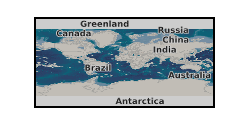
This dataset contains VASP runs performed on several supercomputing services (ARCHER, Monsoon, Thomas and Grace in the UK; Eos in the USA) to calculate the chemical potentials of liquid iron mixtures and solid ferropericlase at Earth's core conditions using density functional theory. Data are available for the chemical potentials of iron in MgFeO and oxygen in liquid FeSiO. These data were used to calculate the partitioning of oxygen between ferropericlase and Earth's liquid core and to analyse the chemical boundary layer above the CMB. The present grant also supported work regarding the homogeneous solid nucleation in iron and iron-oxygen mixtures at Earth's core conditions when dealing with the core paradox. Classical nucleation theory data and results from VASP runs and classical molecular dynamics runs performed on ARCHER and Eos (Oak Ridge, USA) are also included in the uploaded dataset. In addition, the present grant also supported research on the dynamics and evolution of the Earth's core, together with a study confirming the saturation of electrical resistivity of solid iron at Earth’s core conditions (these data were uploaded as part of a previous NERC Grant, NE/H02462X/1). Further details can be found in Davies, Pozzo and Alfe’ (2018, in press); Davies et al. (2018); Pozzo and Alfe’ (2016); Davies et al. (2015).
-
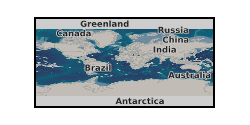
NERC grant NE/R013535/1. Here we present the dataset collected during a brine-CO2 flow-through test using a synthetic sandstone with oblique fractures, performed under realistic reservoir conditions stress. We monitored geophysical, mechanical and transport properties, for drainage and imbibition conditions, representative of the injection and post-injection stages of the CO2 storage process. We collected ultrasonic P- and S-wave velocities and their respective attenuation factors, axial and radial strains, electrical resistivity, pore pressure, temperature and brine and CO2 partial flows (from which relative permeability was later calculated).
-

Temperature reconstructions indicate that the Pliocene was ~3 degrees C warmer globally than today, and several recent reconstructions of Pliocene atmospheric CO2 indicate that it was above pre-industrial levels and similar to those likely to be seen this century. However, many of these reconstructions have been of relatively low temporal resolution, meaning that these records may have failed to capture variations associated with the 41 Kyr glacial-interglacial cycles thought to operate in the Pliocene. These data represent new, high temporal resolution alkenone carbon isotope based record of pCO2 spanning 0 to 0.2 and 2.6 to 3.3 million years ago from ODP Site 999 (supplementing our other data repository focused on 2.8 to 3.3 million years ago). Our record allows a) direct comparison of alkenone-derived pCO2 from the Pleistocene to that of the Pliocene and b) comparison of the former to the ice core record. The raw data are sea surface temperature estimates from the Uk'37 proxy, foraminiferal and alkenone d13C values, from which carbon isotope fractionation during photosynthesis (ep) can be calculated. Using nutrient concentrations (growth rate correction) and SSTs, these ep values can be converted into [CO2(aq)] which in turn can be used to calculate pCO2.
-
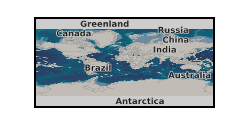
Whole rock geochemical data from the Alpine Fault Zone. These data have been generated from systematic sampling through the Deep Fault Drilling Project - Phase 1 rock cores and from analyses of cuttings retrieved during the Deep Fault Drilling Project - Phase 2. Geochemical analyses on the fault rocks to understand the conditions at which they were deformed. The dataset is associated with the UK component of a major international campaign, the Deep Fault Drilling Project (DFDP). to drill a series of holes into the Alpine Fault, New Zealand. The overarching aim of the DFDP to understand better the processes that lead to major earthquakes by taking cores and observing a major continental fault during its build up to a large seismic event.
-
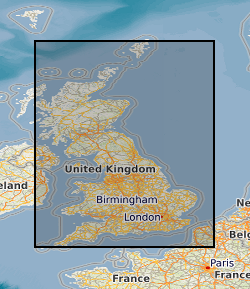
**This dataset has been superseded** The newGeoSure Insurance Product (newGIP) provides the potential insurance risk due to natural ground movement. It incorporates the combined effects of the 6 GeoSure hazards on (low-rise) buildings: landslides, shrink-swell clays, soluble rocks, running sands, compressible ground and collapsible deposits. These hazards are evaluated using a series of processes including statistical analyses and expert elicitation techniques to create a derived product that can be used for insurance purposes such as identifying and estimating risk and susceptibility. The evaluated hazards are then linked to a postcode database - the Derived Postcode Database (DPD), which is updated biannually with new releases of Ordnance Survey Code-Point® data (current version used: 2018.3). The newGIP is provided for national coverage across Great Britain (not including the Isle of Man). This product is available in a range of GIS formats including Access (*.dbf), ArcGIS (*.shp) or MapInfo (*.tab). The newGIP is produced for use at 1:50 000 scale providing 50 m ground resolution.
-
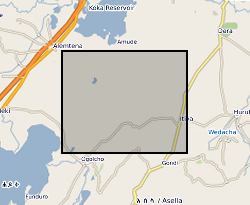
This data set characterises the seismicity occurring within 30 km of the Bora - Tullu-Moye volcanic field between 2016 and 2017. It also provides a description of key geologic features in this region. See the README file for a full explanation of the data set. These data were originally published as supplementary material in g-cubed article: Seismicity of the Bora – Tullu-Moye Volcanic field 2016-2017: Greenfield et al (2018), https://doi.org/10.1029/2018GC007648
-
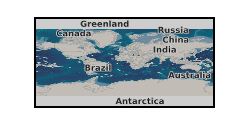
High frequency (100 Hz) data from two horizontal induction coils measuring the Earth's magnetic field at the Eskdalemuir Observatory in the United Kingdom. The data covers the period from January 2013 to December 2013. Also included are examples of Matlab code and the frequency calibration files to convert to the raw data to SI units. Thumbnail spectrograms and metadata about the setup and equipment is also supplied.
-
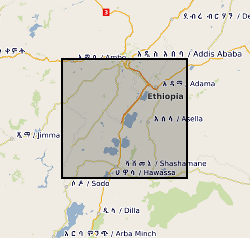
Glass major element geochemical data on Late Quaternary tephra deposits from the Main Ethiopian Rift volcanoes. These data were acquired using Electron Microprobe Analysis, and secondary standard data (MPI-DING glasses) are also included. All samples were given a unique name related to the outcrop from which they were obtained. Outcrops are named "MER" followed by a 3-digit number (e.g. MER153). Samples from a given outcrops are given the same name, followed by a letter (e.g. MER153A). Outcrop localities, with GPS coordinates (Lat Long WGS84) and brief description of the geology are also included. These data are published as Supplementary Files to a paper published in Journal of Volcanology and Geothermal Research: Fontijn et al (2018), https://doi.org/10.1016/j.jvolgeores.2018.02.001.
-
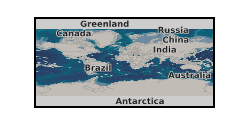
The datasets contain 5 stitched X-ray micro-tomographic images (grey-scale, doped, difference, segmented porespace and segmented micro-porespace with porespace) and 3 X-ray nano-tomographic images of a region of microporous porespace in Estaillades Limestone. The x-ray tomographic images were acquired at a voxel-resolution of 3.9676 µm using a Zeiss Versa XRM-510 flat-panel detector at 70 kV, 6W, and 85 µA with an exposure time of 0.037s and 64 frames. The X-ray nano-tomographic images were reconstructed using a proprietary filtered back projection algorithm from a set of 1601 projections, collected with the Zeiss Ultra 810 with 32nm voxel size using a 5.4keV energy quasi-monochromatic beam with an exposure time of 90s. The data was collected at Imperial College London and Zeiss Labs with the aim of investigating pore-scale microporosity in carbonates with a heterogenous pore structure. Understanding the effect of microporosity on flow is important in many natural and industrial processes such as contaminant transport, and geo-sequestration of supercritical CO2 to address global warming. These tomographic images can be used for validating various pore-scale flow models such as direct simulations, pore-network and neural network models for upscaling flow across scales.
-
Gro for GooD VES (Vertical Electrical Soundings) Data, Kwale County, Kenya (NERC grant NE/M008894/1)
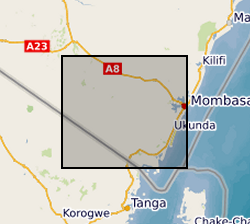
Results of Vertical Electrical Soundings (VES) study conducted in Kwale County, Kenya in July and August 2017 by University of Nairobi and Water Resources Management Authority as part of the Gro for GooD project (https://upgro.org/consortium/gro-for-good/) to determine the existence of deeper aquifers.
 NERC Data Catalogue Service
NERC Data Catalogue Service